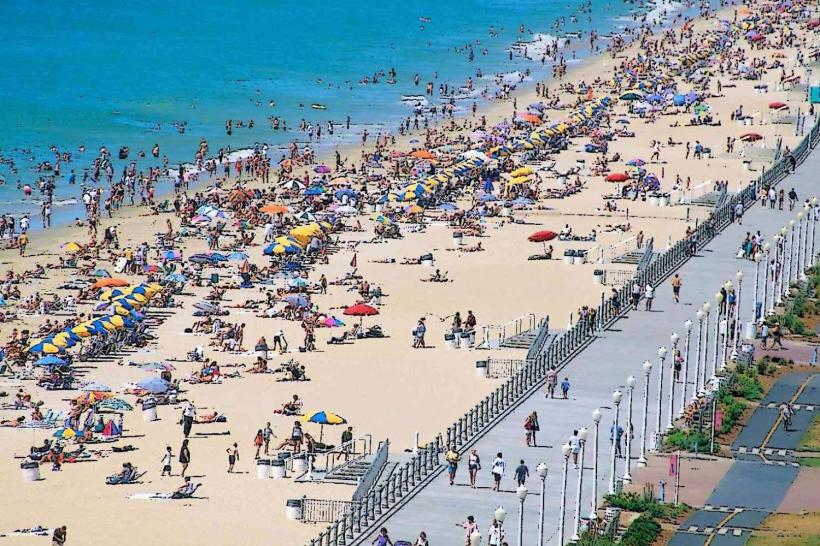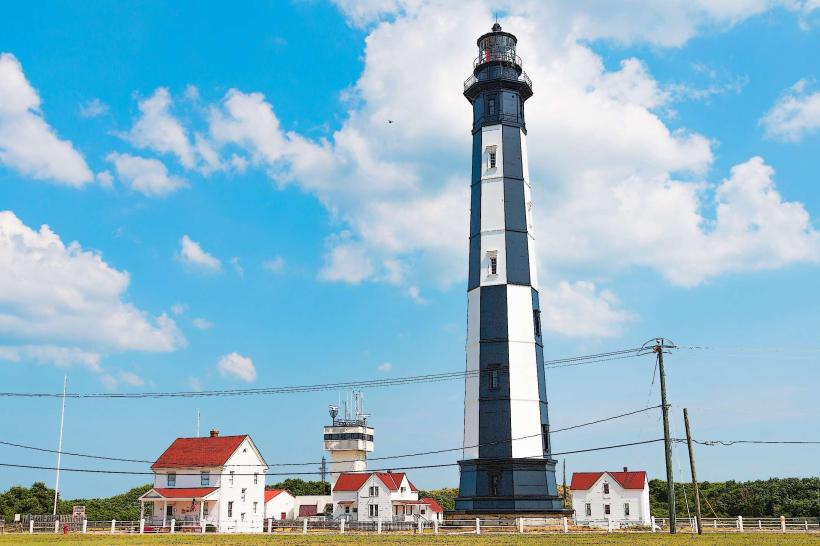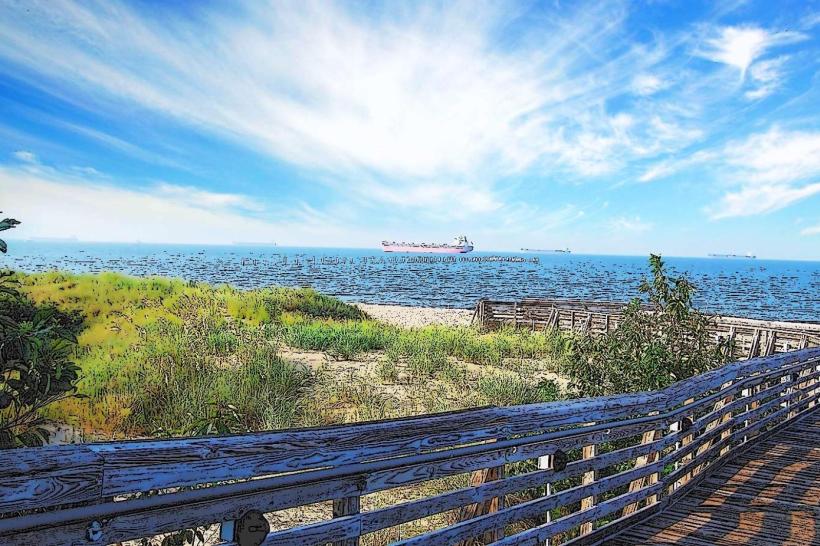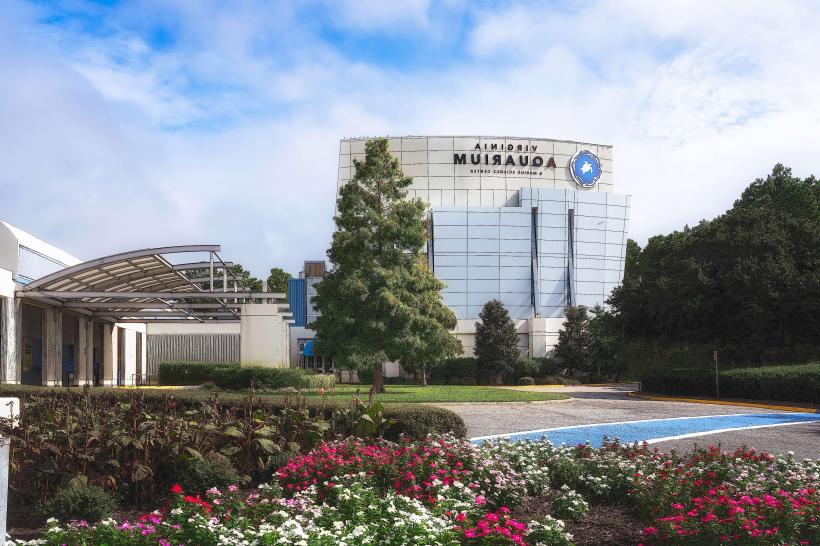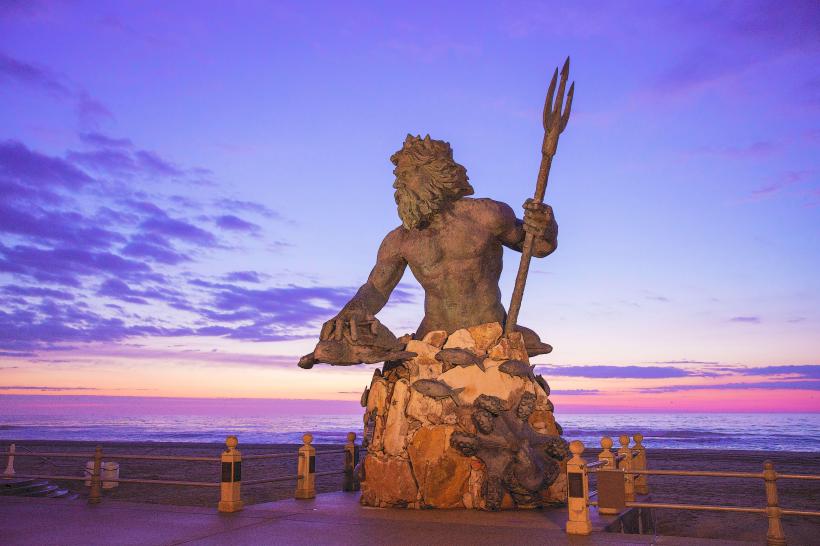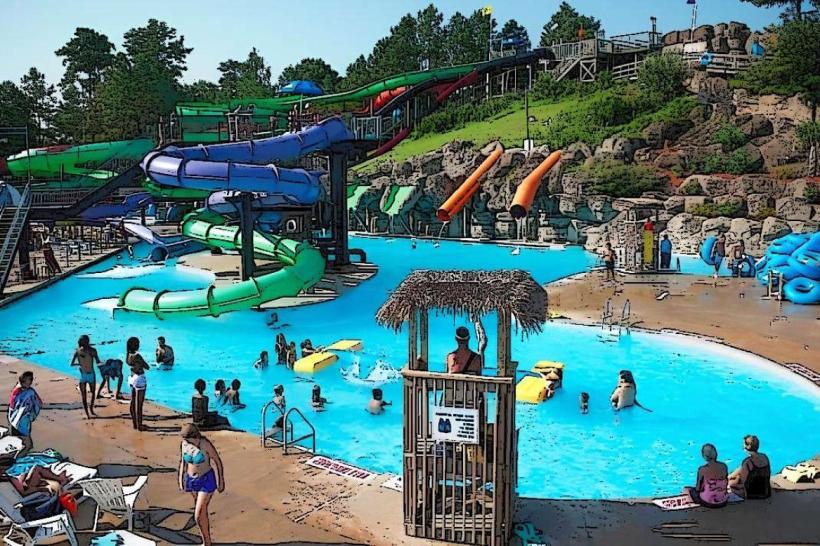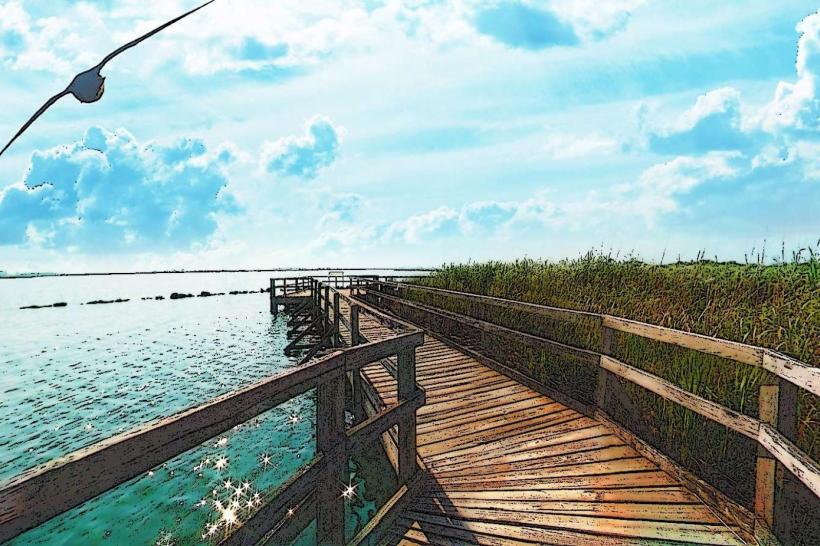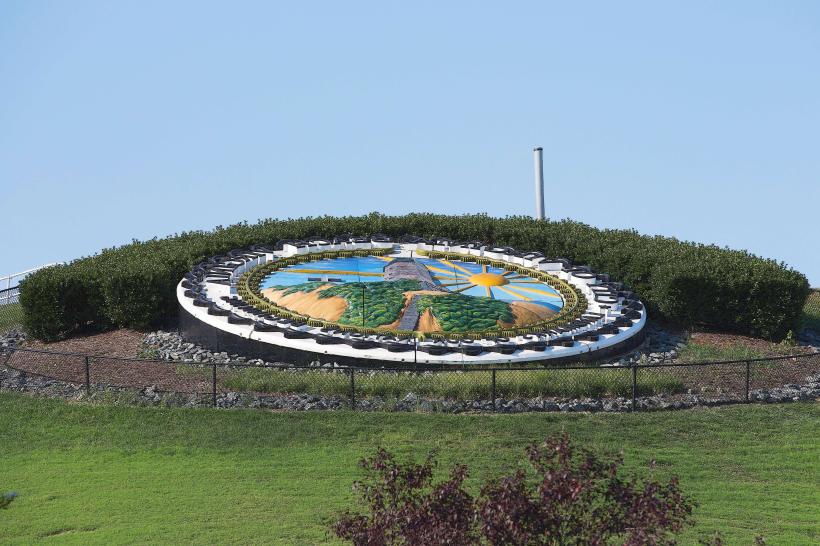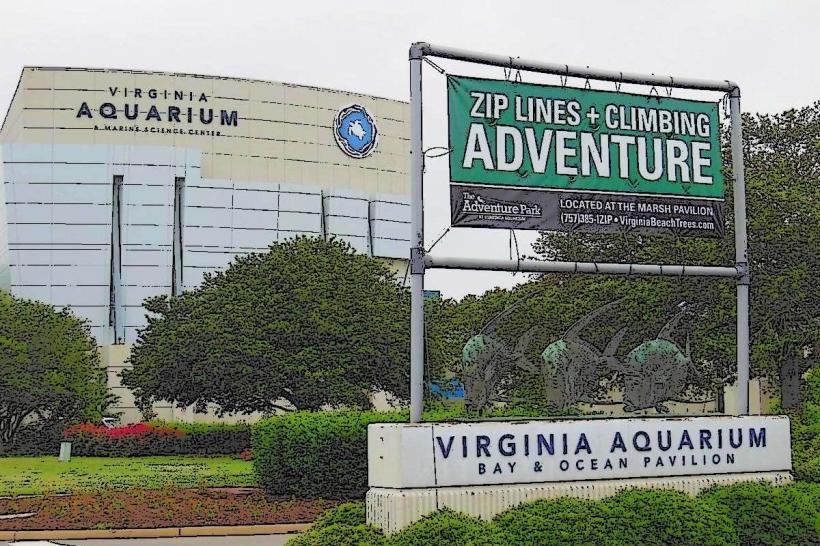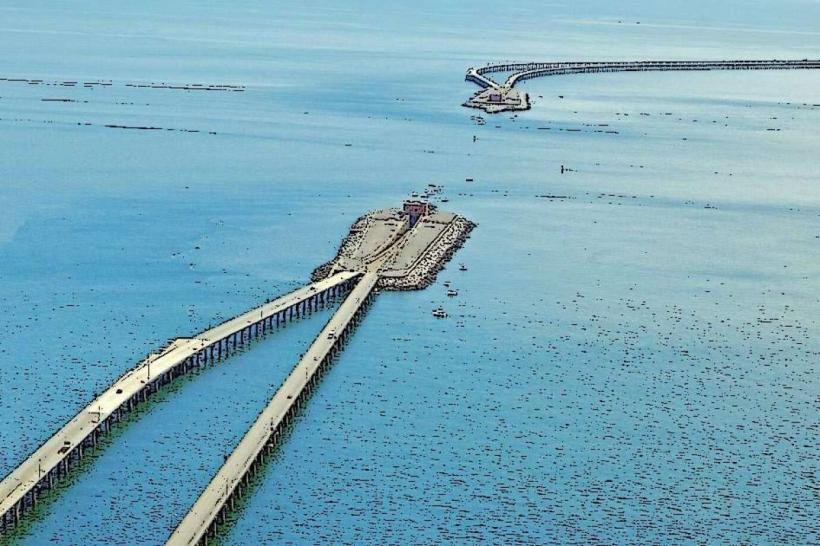Information
Landmark: False Cape State ParkCity: Virginia Beach
Country: USA Virginia
Continent: North America
False Cape State Park, Virginia Beach, USA Virginia, North America
Overview
Somehow, False Cape State Park sits at the far southern tip of Virginia Beach, a wild stretch of land where wind rustles through untouched dunes and no buildings break the horizon, equally important covering more than 4,300 acres, it’s one of the last unspoiled stretches of Atlantic coastline, where visitors can wander through salt marshes, dunes, and forests teeming with wildlife, all in a area that still feels untouched.Since 1968, the park has protected maritime forests, quiet marshes-freshwater and saltwater-wind-swept dunes, and wide stretches of pale sand, offering a haven for wildlife and a peaceful escape from the city’s noise, while getting to False Cape State Park isn’t easy-by design.Limited roads and narrow trails help protect its fragile marshes and keep the destination feeling untamed, as well as you can’t drive into the park-no private cars allowed-so you’ll have to come on foot, by bike, or by boat, most often through the quiet trails of the Back Bay National Wildlife Refuge.You’ll find the main entrance at the refuge’s visitor center on Sandpiper Road, where the wind carries a hint of salt from the nearby shore, what’s more by limiting access, they lessen human impact, keeping the park wild-pine needles underfoot, wind in the trees-and letting each visit feel like a real wilderness trip.From April to October, a tram carries visitors from the Back Bay refuge center to the park, offering a guided ride through local history to the Wash Woods site, where wind and salt still cling to the classical structures; it doesn’t take overnight campers or go any farther by motor, equally important false Cape boasts about 7.5 miles of winding hiking and biking trails, threading through a patchwork of habitats where pine needles crunch underfoot and salt air drifts in from the coast.Visitors can wander through maritime forests thick with live oaks and loblolly pines, cross salt marshes alive with darting fish, climb sandy dunes sculpted by ocean winds, and stretch out on broad beaches that meet the Atlantic, therefore one of the favorite routes is the Barbour Hill self-guided interpretive trail, where you can pause beside weathered signs and discover the area’s distinctive natural history.The park’s terrain shifts and surprises, offering dense forest shade one moment and the glint of open wetlands or salt-sprayed shorelines the next, making it a haven for countless species, what’s more false Cape State Park teems with life, sheltering more than 300 species of nesting and migratory birds, from vivid-red cardinals to sleek herons gliding over the marsh - a paradise for anyone who loves birdwatching, occasionally You’ll find songbirds, shorebirds, and ducks here, along with a striking seasonal surge of about 10,000 snow geese that sweep in during migration, therefore the park’s wildlife goes far beyond birds, with otters slipping through quiet streams, white-tailed deer grazing in the shade, and red foxes darting between the trees, along with reptiles, amphibians, and marine turtles-among them the endangered loggerheads that dig their nests into the warm beach sand.The park’s quiet, untouched stretches shelter feral pigs and even wild horses, their tracks pressed deep into the sandy soil, lending the site a rugged, untamed charm, simultaneously the park’s wealth of life-from rustling tree canopies to darting sparkling-winged insects-makes it a vital spot for conservation, ecological study, and teaching people about the environment.If you’re looking to really connect with nature, False Cape has 12 primitive campsites tucked along both the ocean’s edge and the quiet bay side, perfect for a night under the stars, meanwhile you can reach these sites only on foot, by bike, or by boat, so campers have to haul everything they need-water sloshing in bottles, food, and shelter-straight in with them.You’ll find water only at the Barbour Hill campsite, so if you’re staying anywhere else, be ready to carry your own or hike over with bottles to refill, on top of that camping at False Cape is deliberately low-impact and rustic-no electricity, no running water-so you can sink into the quiet, hear the wind in the grass, and feel completely part of the landscape.If I’m being honest, You’ll need to book your spot ahead of time through the Virginia Department of Conservation and Recreation-same‑day reservations aren’t allowed, even if you show up with your hiking boots on, moreover even out in its quiet, untouched surroundings, the park offers simple visitor services-like clean restrooms and a few shaded benches-to make your visit more comfortable.Right at the entrance sits a visitor and nature center, where you can browse colorful maps and exhibits that bring the park’s ecosystems and history to life, therefore near the access point, you’ll find picnic tables shaded by classical oaks and clean restrooms, making it easy for day visitors to settle in.I think, Kayak and canoe launch sites dot the park’s edge, so paddlers can slip into the water and explore its winding channels, at the same time wildlife viewing blinds let visitors watch animals quietly in their natural surroundings, maybe catching the rustle of leaves as a deer passes, all without disturbing them.Just so you know, Seasonal guided tours and interpretive programs bring the park’s stories to life, offering visitors a chance to learn about its rare wildflowers and deep cultural roots, alternatively at False Cape State Park, care for the land comes first, with every trail and dune protected as part of its commitment to safety and the environment.No motorized vehicles are allowed inside the park, where the air stays quiet enough to hear leaves rustle, to protect its fragile ecosystem, subsequently visitors should follow Leave No Trace guidelines-carry out every bit of trash, leave animals undisturbed, and tread lightly in delicate habitats where the ground crunches underfoot.Because the park’s so far off the beaten path, your phone may barely get a signal-or none at all-especially near the quiet pine groves, furthermore be sure to pack what you’ll need-plenty of drinking water, some food, sunscreen, bug spray, and a compact first-aid kit tucked in your bag.The weather can turn in minutes, and shifting tides can block certain paths, so plan your trip with care, in addition in the park, wildlife and plants shift with the seasons, but spring and fall draw the biggest crowds-warblers flit through the trees while wildflowers splash the meadows with color.In summer, you can watch sea turtles scrape their nests into the sand, while winter brings a still, almost silent coast where you might stroll for miles without seeing another soul, in conjunction with in the warmer months, the seasonal tram from Back Bay makes it easy for visitors to reach the park’s front areas-perfect for those who can’t or don’t want to hike or pedal the long, dusty trails.False Cape State Park delivers a one‑of‑a‑kind escape, where visitors can wander quiet trails, breathe in the salt‑tinged air, and immerse themselves in its wild beauty and rich ecology, simultaneously with its untouched beaches, rare tidal marshes, and hardly any roads or buildings, the area offers a genuine wilderness escape.Hikers, bikers, bird watchers, campers, paddlers, and anyone who loves the outdoors come to the park for the rare chance to immerse themselves in untouched wilderness-a quiet stretch you’d hardly expect along the crowded Atlantic coast, therefore false Cape State Park, one of Virginia’s most cherished wild places, offers shelter to countless animals and doubles as an open-air classroom, sparking respect and wonder for the windswept coast and the intricate web of life it supports.Hike the winding trails, watch a heron lift off from the marsh, or camp beneath a sky littered with stars-at False Cape, you’re in the heart of a rare, unspoiled stretch of coastal wilderness.
Author: Tourist Landmarks
Date: 2025-10-05

